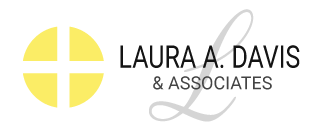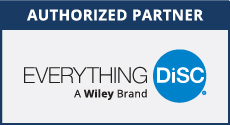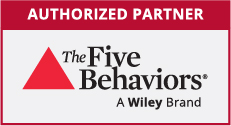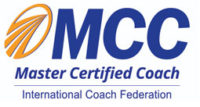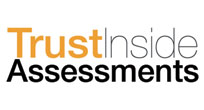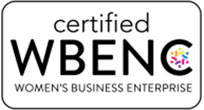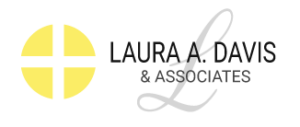People-Whispering Tip:
“No culture can live if it attempts to be exclusive.” ~ Mohandas Gandhi
“I want to appreciate you without judging. Join you without invading. Invite you without demanding. Leave you without guilt.” ~ Virginia Satir
“To say ‘we’ and mean ‘I’ is one of the most recondite insults.” ~ Theodor Adorno
What We Can Learn About Inclusion From “The Planet of the Apes”
I suspect you may be wondering what apes have to do with corporate culture.
Well, during the filming of the movie “The Planet of the Apes” in 1967, Charlton Heston (remember Moses?) noticed that “an instinctive segregation” seemed to occur with actors on the set. During the filming of the movie, the actors playing the different animals tended to sit and socialize with one another and exclude actors who were not playing the same roles. In other words, the apes ate together but so did the chimpanzees with the other chimps, the gorillas with the other gorillas, the orangutans with the other orangutan actors while the humans ate with themselves alone.
Lest you think that was an isolated incident, James Franciscus noticed the same thing filming “Beneath the Planet of the Apes.” He noticed that during meals, he would look up and see all the orangutans eating with one another at one table, while the apes would be eating with the other ape characters at another table, while the humans would be seated at yet another table by themselves. The orangutan characters would not eat with the ape characters, and the humans would not sit down and eat with any of the animal characters.
These examples point out how quickly and naturally we as humans put ourselves into social groups. We have all heard the expression “birds of a feather flock together.” This is not always a bad thing but this human tendency to develop in-groups and out-groups can be a subtle form of exclusion in the workplace.
One of my strategic alliances is serving as a Coach/Facilitator with The Mind Gym, a UK-based learning company that delivers 90-minute workouts for your brain on a wide variety of workplace topics. They define an in-group as “an identifiable group that you consider yourself to be a member of” while an out-group is “an identifiable group that you don’t consider yourself to be a member of.” In short, our group membership revolves around the way we identify ourselves. In other words, it is about our perception of how much we have in common with the members of the group with whom we identify or not.
In the workplace, this in-group and out-group phenomenon can show up between marketing and sales, credit and collections, management and union employees, headquarters and field staff, and on and on. The problem is not that we have different social groups at work so much as this “group membership” can lead to exclusion if we don’t take the time to get to know one another to see our deeper, inherent similarities as people.
Stephen Young, former Chief Diversity Officer at JPMorgan Chase, and author of Micro Messaging: Why Great Leadership is Beyond Words, says that in today’s world, we have most of the cases of obvious exclusion (the elephants) such as race, gender, sexual orientation, and so on handled. Yet he argues while we are “managing the elephants, the ants walk by.” In other words, smaller and less obvious cases of exclusion (the ants) walk by unnoticed. In my work, I see interpersonal style differences and biases towards one or two of the DiSC styles on a team as another example of exclusion without awareness.
Instead, we are striving for inclusion or a psychologically safe workplace where everyone can feel free to express who they are at work without fear of prejudice or exclusion. With inclusion, diversity of thought, as well as more obvious forms of diversity, comes higher performance, greater customer and employee satisfaction and engagement, better and faster innovation, and more.
Not surprisingly, research shows that the most important skill to help people feel included is self-awareness. Without awareness of the situation and how people may be reacting to subtle cases of exclusion, it is difficult to modify or adjust behavior.
So what can you do to promote inclusion in your workplace? While this is a big topic about which volumes have been written, I would like to offer three keys to get you started on the journey.
Here are 3 keys to help you to create a more inclusive work environment.
1) Acknowledge someone for who they really are and show acceptance.
The best way to demonstrate acceptance of someone is through our communication and conversations with them. In conversation, we can strive to pick up on all cues, both verbal and nonverbal. Likewise, we can encourage more open communication through eye contact, facial expressions, head nods, and so forth.
2) Bring people together when differences are causing contention.
The power of understanding DiSC can be useful here in allowing you to separate the personality/behavioral style differences from the issues at hand. Seek to isolate the points of disagreement while legitimizing the right people have to hold differing viewpoints. Emphasize the points of agreement (sometimes people are in vehement agreement and just don’t realize it due to style differences!) and state the areas of common ground as clearly as possible. Get people to refocus on the goal to be reached or the decision to be made in order to determine the next action steps that are needed given the situation.
3) Intervene and support people in the out-group when they are being excluded.
This may be the most challenging inclusive behavior to implement in that we don’t always want to have our viewpoints and perspectives challenged. What you can do is challenge generalizations and test assumptions. Inquire to seek to understand why people feel the way they do. Express empathy for their right to feel the way they do even if you disagree. Bring others into the conversation if they are not well-represented to ensure that all potential viewpoints are heard and valued.
While practicing inclusive behavior is not always easy, it is well worth the benefits. In short, if we can recognize exclusion and take action in the moment, we can make everyone around us feel like they are in the in-group so that they can bring their best selves to work for the benefit of all.
To learn more and for assistance in cultivating healthy, engaged, inclusive teams and leaders, and Responsibility-Based Cultures, please call us at 404-327-6330 or email me at Laura@lauraadavis.com.
DiSC® Assessment Application(s)
1) The Five Behaviors of a Cohesive Team Demo Site is Now Available at http://demo.fivebehaviors.com.
2) For supporting information on DiSC, check out http://demo.everythingdisc.com.
Best-selling author Patrick Lencioni has joined forces with Wiley (formerly Inscape Publishing) to offer this excellent process for building effective teams.
Teamwork is the lifeblood of an effective organization. Unlocking the code to getting groups of people to work together in high-performing and joyous ways is the key to a profitable and sustainable corporate culture.
The process consists of an individual and team assessment based upon Lencioni’s time-tested, proven model. The accompanying Facilitator Kit walks you through his research-based model to uncover where your team’s strengths and areas for growth and development lie.
To take advantage of this well-designed, time-tested method to unleash your team’s potential, call our office at 404-327-6330 or email Laura@lauraadavis.com.
3) The Everything DiSC Group Culture Report
Just as individuals have unique styles, groups develop their own styles and cultures. This culture is an informal combination of behaviors, values, and attitudes that most people in the group take for granted. Put simply, group culture is “the way we do things.”
Group culture is important because it has a large impact on the behavior, attitudes, and satisfaction of each group member. People who fit into the group culture feel at home in the group. But the other people might feel like strangers in a strange land.
Culture also looks at the implications for the group as a whole. It affects such things as the pace at which work gets done, how outsiders are treated, the attention paid to details, how decisions are made, and the kinds of risks the group takes. These in turn influence the success of the group in meeting its goals.
Please see the Sample Report to see how insight into your team’s culture might help your team to become more effective in the future.
4) The Coaching Clinic Workshop: Coaching Skills for Leaders and Managers
The Coaching Clinic is a two-day leadership development program designed to train managers, executive, leaders, and supervisors to use coaching skills in their work relationships. There is also a half-day version available for executives.
Developed by Corporate Coach U, this program allows participants to:
- Discover coaching as a powerful leadership and management development model.
- Experience and practice “state of the art” coaching techniques.
- Understand the structure and process of integrating a “Coach Approach” as a leader.
- Apply the learning within the workplace right away.
Click here for more information.
5) The 8 Dimensions of Leadership: DiSC Strategies for Becoming a Better Leader by Jeffrey Sugarman, Mark Scullard, and Emma Wilhelm
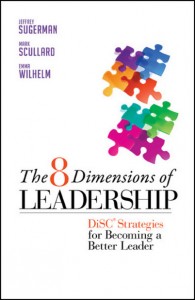 We all approach leadership from a unique starting point – a combination of our own psychological make-up, intelligence, training, and experience. When anyone strives to grow as a leader, they need to stretch their energy in new directions.
We all approach leadership from a unique starting point – a combination of our own psychological make-up, intelligence, training, and experience. When anyone strives to grow as a leader, they need to stretch their energy in new directions.
For example, a person may be promoted into a leadership role because of their outgoing nature and positive attitude. While this visionary style may prove inspiring, they might also need to develop their analytical side in order to be more successful at running a business.
The 8 Dimensions of Leadership Model described in the book is based on the DiSC model, a systematic way to understand the forces beneath the surface that drive our individual behavior.
In the previous issue of this ezine, I promised to cover some of the lessons we can all learn from each of the 8 leadership styles: Pioneering, Energizing, Affirming, Inclusive, Humble, Deliberate, Resolute, and Commanding.
Let’s look at the strengths of the Energizing Style of Leadership and the lessons we can learn from it.
First, let’s review the strengths of the Energizing or iD Leader. Energizing leaders, like the Pioneering or Di Leaders, tend to be high-energy and inspirational people. They have a way of creating a dynamic environment while helping people work towards challenging goals.
The Strengths of Energizing Leaders are that they:
- Are able to rally people around group goals
- Tend to look on the bright side
- Are comfortable being in the spotlight
- Often accept other people’s ideas
- Take the time to celebrate accomplishments
- Build solid professional networks
- Have a knack for selling ideas
- Show appreciation for other people’s contributions
What can those of us who are not so naturally Energizing learn from those with this predominant, natural leadership style?
The three lessons we can learn are:
- People need enthusiasm to reach their goals.
- Sometimes it does matter who you know.
- Emotions are the connective tissue of the team.
The ultimate goal of understanding your leadership style is to broaden your repertoire beyond your comfort zone/default setting so that you can make the best choice of leadership style and behavior based upon the needs of any given situation.
There is a four step process for using this information to improve your leadership effectiveness as follows:
- Discover Your Primary Leadership Dimension.
- Learn about the Psychological Drivers, Motivations, and “Blind Spots” Typical of Leaders with Your Style.
- Reflect on What Really Matters Most in your Leadership Development Right Now.
- Learn Leadership Lessons in the Areas in Which You’d Like to Grow and Expand.
Stay tuned for future webinars and trainings which will delve into The 8 Dimensions of Leadership Model so you will know how to apply it for your own, and your team’s, leadership development needs.
For more on how to increase your organization’s effectiveness using the appropriate Everything DiSC profile and/or training materials for your unique needs, please call us at 404-327-6330 or email me at Laura@lauraadavis.com.
Transformational Coaching Tip:
Becoming More Energizing
Whether you are naturally an Energizing style leader or not, here are some tips to help you build upon the strengths of this style.
Tips for Becoming More Energizing:
- Brainstorm a variety of ways you could build enthusiasm in your group or organization.
- Hold regular meetings to ensure people are kept up to speed on projects and initiatives.
- Build enthusiasm by being intentional in building your team.
- Make an effort to reconnect with contacts you haven’t talked to in a while.
- Participate in professional networking online as well as in person.
- Leave the comfort of your office and get out and talk to people.
- Ask people what they find motivating – it might surprise you.
- Generate interest in the group’s goals by explaining how people’s contributions will fit into the larger picture.
- Engage people by practicing the art of working as a team.
For assistance in applying any of these best practices into your workplace for more powerful, effective results, feel free to call us at 404-327-6330 or email Laura at Laura@lauraadavis.com.
